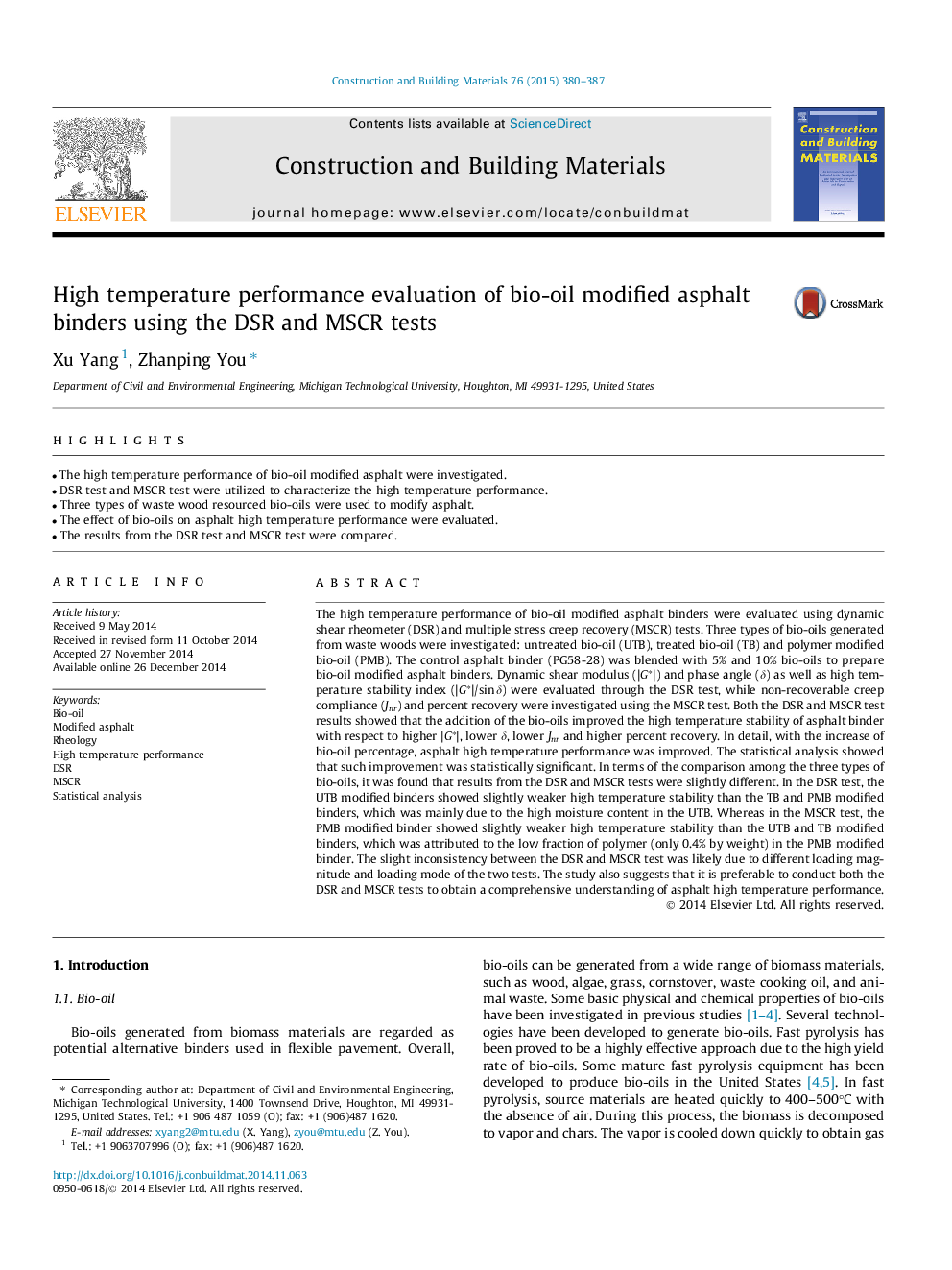| Article ID | Journal | Published Year | Pages | File Type |
|---|---|---|---|---|
| 257253 | Construction and Building Materials | 2015 | 8 Pages |
•The high temperature performance of bio-oil modified asphalt were investigated.•DSR test and MSCR test were utilized to characterize the high temperature performance.•Three types of waste wood resourced bio-oils were used to modify asphalt.•The effect of bio-oils on asphalt high temperature performance were evaluated.•The results from the DSR test and MSCR test were compared.
The high temperature performance of bio-oil modified asphalt binders were evaluated using dynamic shear rheometer (DSR) and multiple stress creep recovery (MSCR) tests. Three types of bio-oils generated from waste woods were investigated: untreated bio-oil (UTB), treated bio-oil (TB) and polymer modified bio-oil (PMB). The control asphalt binder (PG58-28) was blended with 5% and 10% bio-oils to prepare bio-oil modified asphalt binders. Dynamic shear modulus (|G∗|) and phase angle (δ) as well as high temperature stability index (|G∗|/sin δ) were evaluated through the DSR test, while non-recoverable creep compliance (Jnr) and percent recovery were investigated using the MSCR test. Both the DSR and MSCR test results showed that the addition of the bio-oils improved the high temperature stability of asphalt binder with respect to higher |G∗|, lower δ, lower Jnr and higher percent recovery. In detail, with the increase of bio-oil percentage, asphalt high temperature performance was improved. The statistical analysis showed that such improvement was statistically significant. In terms of the comparison among the three types of bio-oils, it was found that results from the DSR and MSCR tests were slightly different. In the DSR test, the UTB modified binders showed slightly weaker high temperature stability than the TB and PMB modified binders, which was mainly due to the high moisture content in the UTB. Whereas in the MSCR test, the PMB modified binder showed slightly weaker high temperature stability than the UTB and TB modified binders, which was attributed to the low fraction of polymer (only 0.4% by weight) in the PMB modified binder. The slight inconsistency between the DSR and MSCR test was likely due to different loading magnitude and loading mode of the two tests. The study also suggests that it is preferable to conduct both the DSR and MSCR tests to obtain a comprehensive understanding of asphalt high temperature performance.
